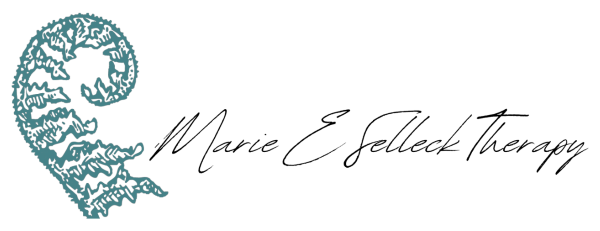Understanding Dissociation: How Therapy Can Help You Reconnect
Dissociation is like your mind's emergency exit door. When life becomes too overwhelming, your brain hits the escape button. But what does this actually feel like? And how can trauma therapy help you find your way back?
What Dissociation Really Feels Like
Picture this: you're watching a movie of your own life instead of living it. That's dissociation. Your body is present, but your mind has checked out. Everything simply seems foggy or dreamlike. Colors might look dull. Sounds feel muffled. It's not dramatic or obvious to others. Instead, it's quiet and sneaky.
Time gets weird too. Minutes can feel like hours, or entire days can pass in what feels like minutes. You might find yourself somewhere with no memory of how you got there. Or you'll realize you've been staring at the same page for twenty minutes without reading a word.
Your emotions might feel turned off completely. Not sad, not happy – just nothing. It's like someone dimmed all the lights in your emotional world. This numbness often confuses people because they expect trauma responses to be more obvious.
Physical sensations change as well. You might feel disconnected from your body, like your hands aren't really yours. Some people describe feeling like they're made of cotton or floating in water. Touch might feel distant or unreal.
Why Your Brain Does This
Your brain isn't broken when it dissociates. It's actually being protective. You've probably heard of fight or flight responses to danger. But there's a third option your nervous system uses: freeze. Dissociation is your brain's freeze response.
When faced with trauma or overwhelming stress, your body quickly decides what to do. Can you fight back? Can you run away? If neither option feels possible or safe, your nervous system chooses to freeze. This isn't giving up – it's strategic survival. Animals in the wild do this too. When a gazelle can't outrun a lion, it goes limp and still.
For humans, the freeze response often shows up as dissociation. Your body stays put, but your mind checks out. It's like your brain says, "If I can't physically escape this situation, I'll mentally escape instead."
This response often starts in childhood. Kids who face ongoing stress, abuse, or neglect can't fight back or run away from the adults who are supposed to protect them. So their developing brains get really good at the freeze response – mentally going somewhere else when things get bad. The problem is, this protective response can stick around long after the danger is gone.
As adults, dissociation might kick in during stress at work, conflict in relationships, or even positive events that feel too intense. Your brain, still trying to protect you, uses the same old strategy even when it's not needed anymore. Once dissociation kicks in, it can take hours or days to reconnect and begin to feel something again.
Your emotions might feel turned off completely. Not sad, not happy – just nothing. It's like someone dimmed all the lights in your emotional world.
How Therapy Helps You Reconnect
This is where therapy becomes crucial. Unlike regular talk therapy, trauma therapy understands that healing happens in the body, not just the mind. A skilled trauma therapist won't just talk about your dissociation – they'll help you understand it and work with it.
First, you get help recognizing when dissociation is happening. Many people live with it for years without realizing what's going on. Learning to spot the early signs gives you back some control.
Then, you’re taught grounding and resourcing techniques. These are simple tools that help bring you back to the present moment. They might involve focusing on a physical point on your body, your five senses, breathing exercises, or gentle movement. The goal isn't to stop dissociation completely – sometimes your brain still needs that protection. Instead, trauma therapy helps you choose when to use it, or notice when it is coming up at an unhelpful time, and learn what helps steer away from it.
Another powerful aspect of therapy is helping you understand your story without getting overwhelmed by it. Therapists trained in trauma know how to work at a pace that doesn't flood your system. They help you process difficult experiences bit by bit, so your brain doesn't need to escape as often.
Brainspotting is one specific therapy technique that works particularly well for dissociation. This method uses your natural eye positions to access parts of your brain where trauma gets stuck. When you look in certain directions, your brain can process traumatic and/or stressful memories without you having to talk about every detail. For people who dissociate, brainspotting offers a gentle way to stay connected to their body while healing happens.
Trauma therapy also focuses on building safety in your body. Through various techniques like brainspotting, you learn to tolerate emotions and sensations again. Your nervous system slowly learns that it's okay to stay present, even when things feel intense.
The Road Back to Yourself
Healing from dissociation isn't about never spacing out again. It's about having choices. Trauma therapy helps you develop a toolbox of responses instead of relying on just one.
Recovery takes time, and that's okay. Your brain learned dissociation as protection, and it won't give up that protection quickly. But with the right trauma therapy approach, you can slowly build trust with your own experience again.
The goal isn't perfection. It's connection – to yourself, your feelings, and your life. If dissociation has been your mind's way of coping, you don't have to figure this out alone. Trauma therapy, including specialized approaches like brainspotting, can provide the support and tools you need to reconnect with yourself. Consider reaching out to a trauma-informed therapist who understands dissociation. Your healing journey matters, and professional support can make all the difference in finding your way back home to yourself.


